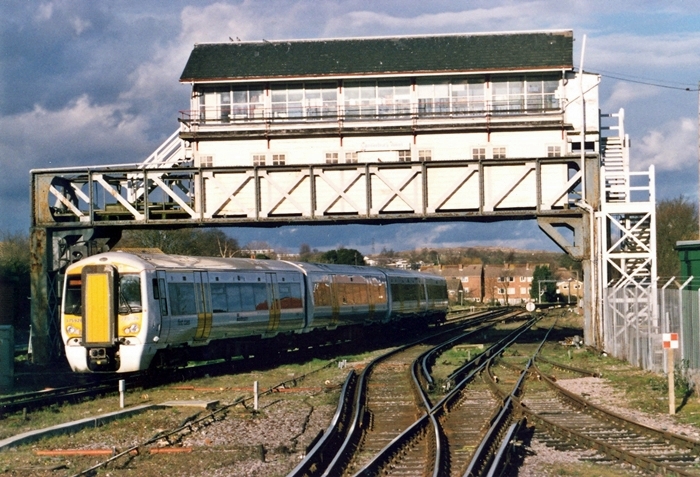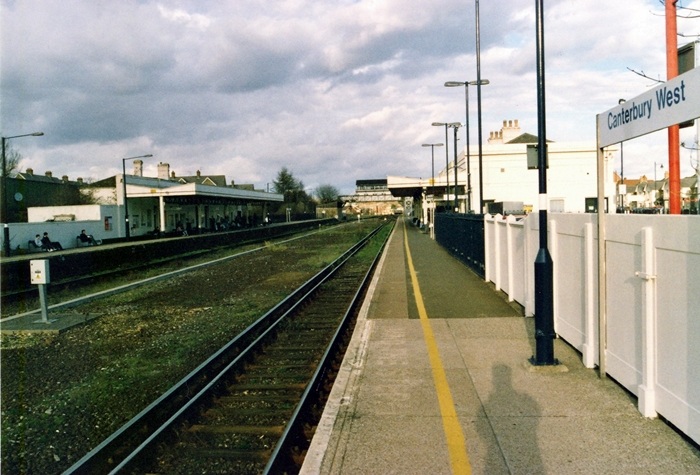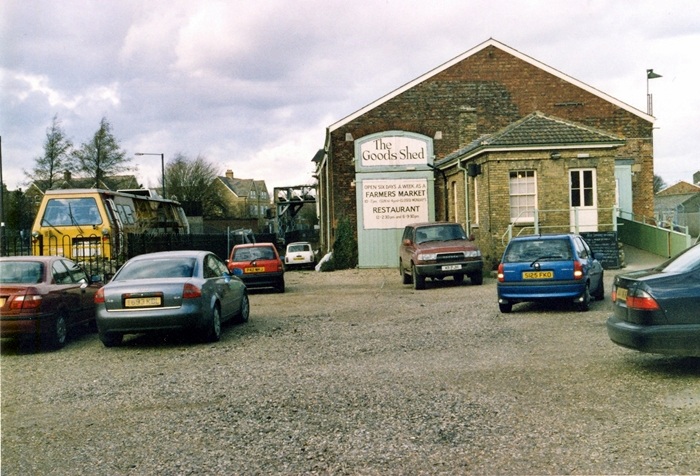
The London Chatham & Dover Railway appeared on the scene on 9th July 1860, when it opened its own Canterbury station ¾-mile south of the SER site. The company commenced through running between London and Dover on 22nd July 1861, and its Canterbury station undoubtedly resided on a quicker, more direct route to the Capital. However, in the latter part of the 19th Century, the SER’s station could boast to be on a junction of three routes:
An Act for the ‘’Elham Valley Railway’’ first passed through Parliament with success on 6th August 1866. This authorised a nineteen-mile-long line between Canterbury and Hythe, which made connections with both SER and LC&DR networks. Capital was to be £300,000 in the form of shares, and the company was granted permission to borrow up to an additional £100,000 if required. This scheme failed to materialise, but the SER later reached Hythe on the opening of a 3½-mile branch between its Dover trunk line at Sandling, and Sandgate, on 9th October 1874. The Elham Valley project was revived in the 1880s, with the formal passing of a second Act on 28th July 1881, which outlined a modified route making connections with SER lines only. The line was to be double-track throughout, 16⅛-miles-long, and link SER routes at Canterbury and Cheriton (west of Folkestone). The entire project was taken over by the SER on the passing of yet another Act on 28th July 1884, but the ‘’Elham Valley Railway’’ remained an independent concern. Opening was piecemeal, the Cheriton to Barham section coming into use on 4th July 1887; through running to Canterbury was possible from 1st July 1889. The ‘’Eltham Valley Railway’’ was fully vested into the SER on 25th June 1891, and the main run-in boards at Canterbury subsequently read ‘’Canterbury (SER) Change for Whitstable and Eltham Valley Line’’. The latter left the SER line 1½-miles south of Canterbury, at Harbledown Junction.
The formation of the SE&CR Joint Managing Committee in 1899 saw Canterbury (SER) and Canterbury (LCDR) stations receive the amended suffixes of ''West'' and ''East'' respectively. This was an unusual name change in light of the former SER station actually being north of the ex-LC&DR site. However, it is possible that the names were used as a result of the two stations' positions in relation to the Stour, the pair being on opposite sides of the river. In its first few years, the SE&CR inserted a double-sided bay line on the station’s ‘’down’’ platform; this was northward facing, and was created simply by cutting a gap within the wide surface between the ‘’down’’ loop and the Whitstable branch track. Connections were also made with malt houses located north of the station, which fed off the ‘’up’’ loop. The SE&CR fitted side valances to both platforms’ train shed roofs, which although improved protection from the elements, only increased the amount of locomotive smoke that became trapped.
In 1926, the Southern Railway undertook a re-signalling programme of the London Bridge area, which encompassed those lines extending to termini at Cannon Street and Charing Cross. Semaphore signals were replaced by colour lights, and the erection of new signal boxes at these three stations saw the decommissioning of earlier SE&CR cabins, which had hitherto been suspended across the running lines on gantries. All was not lost for these older structures, however; that which spanned the tracks at Waterloo Junction was dismantled and shipped across the Solent, to be re-used at Ryde St Johns Road, on the Isle of Wight; the signal box which formerly straddled the lines between London Bridge and Blackfriars was to be re-used at Canterbury West. Assembly of the latter signal box occurred during 1927, and it took over the functions of the two SER cabins on 1st January 1928. Like its predecessors, it was suspended at height, upon a lattice gantry at the northern end of the station, to afford a clear view over both trainshed roofs. Ten years later, the trainshed roofs themselves were no more: in 1938, these were dismantled and replaced by a pair of 125-foot-long V-shaped platform canopies, built to a standard SR design sporting plain timber valances upon a lattice steel framework. Swan neck and straight-headed lampposts were installed at this time, supporting electric lighting and hexagonal lampshades.

Departing towards Thanet underneath the signal box is No. 375926. The signal box was originally built by the SE&CR in 1901, during the enlargement of London Bridge. On the left of this view, behind the unit, immediately beyond the signal box, is the former site of the single-road engine shed. In the foreground, to the bottom right of this view is the sole remaining spur of the goods yard. By this time, colour aspect lights had replaced semaphore signals, but the signal box was still operational. © David Glasspool

A view towards the signal box on 12th February 2005 reveals the gaping hole where two through tracks used to be situated. The Canterbury and Whitstable branch fed into the signal box end of the ''down'' platform (left-hand side), where it terminated. The platforms are linked by a subway. © David Glasspool

The goods shed is now a restaurant and market, and its associated yard has now become a car park. The sole remaining siding (although truncated) of the yard can be seen on the left, its position indicated by the track tamping machine. © David Glasspool
Return to the Kent Rail Homepage or alternatively, check for Updates.
Website & Copyright information - Links - Contact the Webmaster